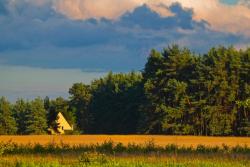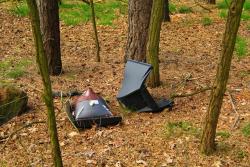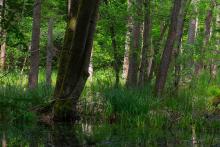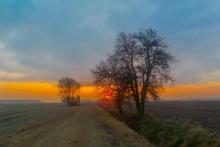 Asset Publisher
Asset Publisher
FOREST PROTECTION
 Ochrona lasu, fot. Jerzy Malicki
Ochrona lasu, fot. Jerzy Malicki
 Ochrona lasu, fot. Jerzy Malicki
Ochrona lasu, fot. Jerzy Malicki
 Zaśmiecanie lasu, fot. Mariusz Grondys
Zaśmiecanie lasu, fot. Mariusz Grondys
The knowledge of the processes occurring in natural environment as well as regular control of the forest standing allow foresters to make an early diagnosis of any threats that might have a negative impact on a forest condition. Every year they perform activities to ensure forest continuity and to increase its natural resistance to stress factors.
Threats are divided into three groups:
* Biotic (for example insect pests, pathogenic fungi, folivorous mammals);
* Abiotic – dangerous natural phenomena (such as strong winds, hails, snow, deluge, high and low temperatures);
* Anthropogenic – caused by men (for example, fires, industrial pollution and forest littering).
Forest protection activities follow the rule of preventive measures. This comprises a set of procedures that aim at increasing forest defensive capabilities against pests and pathogens. The forests in the Babimost District, due to the habitat circumstances, are very much exposed to damage caused by harmful insects. In 2002 foresters fought against dendrolimus pini and nun moth, whereas in 2003 their activities focused on fighting nun moth. The whole territory is regularly monitored by foresters in order to prevent forest insect outbreak. In special situations, namely when insect gradation occurs, specialized aircraft is used for spraying insect repellants. Birds are important foresters' allies in their fight against outbreak of harmful insects.
An important task carried out by foresters is protecting forests against fires. The forests in the Babimost District are classified into the I category of fire danger. A particular threat is created by a close distance of the neighbouring villages, meadows and pastures where local people regularly burn grass in spring. Damage caused by fire is often impossible to assess. Fires destroy habitats of numerous meadow and forest flora and fauna species which leads to nature depletion. Spring grass burning is the most frequent cause of fires in spring and summer (high air temperatures and low humidity of the undergrowth).
Forest fire danger condition is first of all a result of men's activity being careless when lighting fire in forests and on lands adjacent to forests. Many fires could be avoided if people acted carefully and reasonably. For a quick fire detection and fighting, during a fire danger season foresters are on a round the clock duty and the whole area is observed from lookout towers. Due to its location the Forest District Babimost cooperates with five State Fire Brigade Headquarters (in Zielona Góra, Świebodzin, Międzyrzecz, Nowy Tomyśl and Wolsztyn).
In accordance with the Forest Act the Forest Service was established to operate in the State Forests and their tasks comprise, among other things, fighting crime and offence causing forest damage, nature protection and other activities related to property protection.













